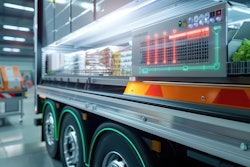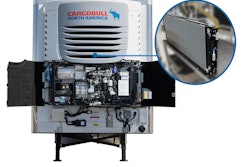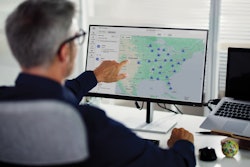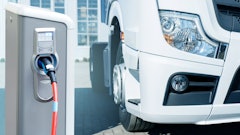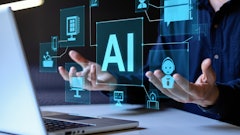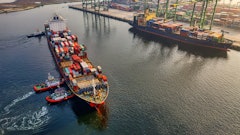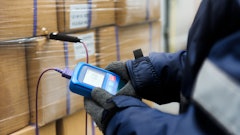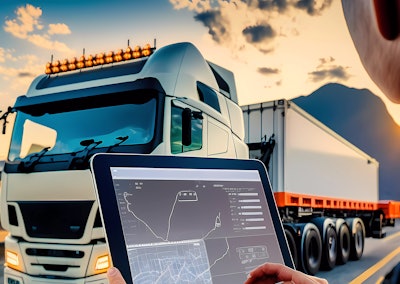
In September 2024, Microsoft dropped a bombshell on the transportation industry: product support and updates for Dynamics GP would end on December 31, 2029. While that may seem like distant news, it has created an immediate crisis for countless trucking fleets whose transportation management systems (TMS) are tightly integrated with Great Plains accounting software, a pairing that has been the backbone of fleet operations for over two decades.
The challenge isn't just finding a new accounting system; it's also about implementing it effectively. It's that these fleets are trapped in an integrated TMS-GP combination that will be phased out together, forcing them to rethink their entire technology infrastructure. But this disruption also presents an unprecedented opportunity to modernize and future-proof fleet operations.
How we got here: The evolution of fleet technology
To understand why GP’s sunsetting creates such a widespread impact, we need to examine how fleet technology has evolved. First offered in 1981 when computers were just becoming essential in freight transportation, Great Plains Software became a household name in trucking. After Microsoft acquired it in 2001, it evolved into the Dynamics GP enterprise resource planning (ERP) solution.
In the early days of fleet technology, legacy TMS software providers offered all-in-one solutions by necessity. Fleets hosted these systems on-premise, and connecting different modules within a single solution was far easier and cheaper than integrating multiple systems on the same server. This was the model that several legacy TMS solutions continue to use today.
The landscape began shifting in the early 2000s when a TMS provider started gaining market share despite lacking a built-in accounting solution. To solve this dilemma, the provider partnered with an accounting software provider. This partnership became the industry standard, creating the integrated foundation that thousands of fleets rely on today.
But technology has fundamentally changed. In today's multi-tenant cloud architectures, integrations can be pre-built between different cloud-based systems. The inherent advantage that all-in-one ERP systems once held has been eliminated. Instead, the flexibility of pairing a best-of-breed TMS with specialized accounting software has become a competitive advantage—if you can break free from legacy constraints.
The TMS-GP trap
Here's the problem facing thousands of fleets: they're not just losing an accounting system—they're losing an integrated ecosystem. These operations have built their entire workflows around TMS-GP integrations, which handle everything from load settlements to driver pay and fuel tax reporting, as well as customer invoicing. When GP sunsets, these integrations disappear, potentially leaving fleets with a TMS that can't properly communicate with their new accounting system.
Traditional single-tenant solutions like the TMS-GP combination come with significant limitations that have become increasingly apparent:
- Higher costs and complexity: Single-tenant licenses require fleets to choose between expensive cloud hosting or managing on-premise servers, both requiring complex system management.
- Limited scalability: These solutions often can't readily scale to meet changing business needs or growth.
- Integration maintenance burden: Single-tenant solutions typically require expensive, custom-built integrations between TMS and accounting systems.
- Technology lag: Legacy systems struggle to incorporate modern capabilities like AI and real-time optimization.
The multi-tenant advantage
Fortunately, modern multi-tenant cloud platforms can address these shortcomings while positioning fleets for future growth. This architecture offers what was unavailable even a few years ago: easily deployable integrations, automatic updates, enhanced cybersecurity, improved scalability, and a lower total cost of ownership.
The key insight for transportation operations is to reverse traditional thinking. Instead of trying to plug accounting software into a TMS, start with a highly configurable multi-tenant TMS architecture designed from the ground up to make integrations cost-efficient to build and maintain.
Although all this may seem new, it has actually been a growing trend. Over the past decade, fleet management software has evolved into specialized solutions. management technologies. In what is being called "The Great Unbundling," the value of software has moved from all-in-one to best-of-breed solutions.
With that, of course, comes headaches and added costs as fleets work to connect and maintain their TMS with other technologies. Still, resting firmly on two anchors— TMS and accounting— the future is where best-of-breed solutions seamlessly integrate and operate across as if they were one, connected by pre-built integrations at the core of multi-tenant platforms.
Industry-focused TMS providers are already delivering this new approach through native integration hubs that offer ready-made connections to cloud-based accounting and fleet technologies. These platforms are designed to automatically maintain and support integrations, enabling fleets to implement leading solutions and achieve cost-effective efficiency improvements rapidly.
The AI imperative
Artificial intelligence will likely be the final factor driving fleets away from single-tenant, on-premise systems. Transportation companies are increasingly relying on sophisticated routing and optimization software to compete on both cost and service. The rapid evolution of AI in this space requires computational resources and data speeds that can only be delivered cost-effectively in the cloud.
Trying to combine cloud-based AI optimization with on-premise or private-cloud systems will undermine AI performance so significantly that virtually all solutions are expected to transition to multi-tenant cloud architectures. Fleets that don't make this transition risk being left behind competitively.
Making the transition
For fleets facing the GP sunset, several critical questions need answers:
- How do you effectively evaluate multi-tenant TMS and accounting solutions?
- What's the best way to phase a transition to cloud-based architecture?
- Should you replace the TMS first, the accounting system first, or both simultaneously?
- How do you compare ROI for subscription models vs. traditional software purchases with high upfront costs?
While answers will vary by fleet requirements, it is clear that change is coming. 2026 is forecasted to be a pivotal year for the transition from legacy ERP and accounting systems to modern solutions.
Microsoft itself is now advising Dynamics GP customers to adopt multi-tenant TMS cloud solutions to enable more efficient ERP and accounting system updates—a clear signal of where the technology is headed.
Turning crisis into opportunity
While the GP sunset initially appears disruptive, it's actually forcing the transportation industry toward a technology architecture that offers superior performance, lower costs, and future-ready capabilities. Fleets that approach this transition strategically can emerge with more efficient operations, improved integration capabilities, and platforms that are ready for AI-powered optimization.
The key is starting the evaluation process now. With just over four years until the GP sunset, fleets have time to make thoughtful decisions, but they can't afford to delay. The most successful transitions will be those who view this change not as a crisis to manage but as an opportunity to build the technology foundation for the next decade of growth.
In the transportation industry, as in navigation, sometimes you need to look beyond the horizon to chart the best course forward.




